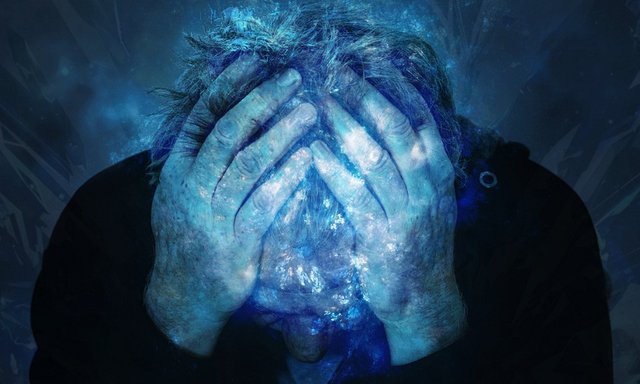A Call for Empathy Towards Schizophrenics
Mental illness can be a lonely war. The bizarre of these rare psychotic states isn’t easily translated to your fellow man, and true emphatic connections is on short supply. Most of our connecting with others, mentally ill or not, occurs with sympathy. That’s roughly the understanding you can get of others headspace when you go through the same feeling yourself. When you are laughing at the same joke as your friends or when you hug your sister at your fathers funeral. Sympathy is a beautiful and healing thing, but a lot of time it’s not enough. It’s to dependent on incidental variables, especially when you are fighting a rare mental decease and the stigmatization that follows.
Schizophrenia is booth a common and not so common mental disorder at the same time. It’s common in media, people like talking about it, speculating about it and being scared of it. On earth on the other hand it’s frequency sits at under 0,5 %. You can find the full DSM-5 definition of what makes of a person schizophrenic here, but the gist of it is that you must have gone through at least two or more of the following for at least a one-month period of time, and at least one of them must be 1, 2, or 3:
- Delusions
- Hallucinations
- Disorganized speech
- Grossly disorganized or catatonic behavior
- Negative symptoms, such as diminished emotional expression

So, there is a lot of portrayal of the decease, horror movies thrive on the horror of hallucinations, but less actual humanization of the people behind it. Everyone can picture a pale young girl rocking back and forth talking to herself while writing names on a wall with her own blood. And that can be a correct portrayal of one specific schizophrenic person, one specific moment of her life. That is all that that is. Schizophrenia changes from moment to moment and most of the time people can deal with it just as any other person can deal with their own shit.
But the uniqueness of the psychosis moment just makes it the more lonelier of a state, and the odds are that the person going trough a psychosis will not be able to find any real sympathy with the people nearby. Even if his or her family would love with all their heart to make the sufferer feel less alone nobody who hasn’t gone through the same mental frenzy can relate on that instinctive level. This is where the beauty of empathy comes in.
The humanistic Empathy
The empathic process has been to my knowledge the most accurate depicted and most profoundly thought about by the famous human psychologist Carl. R. Rogers. His description of empathy is a long one but I think important enough to quote in it’s entirety when ever you get the chance. So here we go:
A empathic way of being with another person has several facets. It means entering the private perceptual world of the other and becoming thoroughly at home in it. It involves being sensitive, moment by moment, to the changing felt meanings which flow in this other person, to fear or rage or tenderness or confusion or whatever that he or she is experiencing. It means temporarily living in the other’s life, moving about in it delicately without making judgments; it means sensing meanings of which he or she is scarcely aware, but not trying to uncover totally unconscious feelings, since this would be too threatening. It includes communicating your sensings of the person’s world as you look with fresh and unfrightened eyes at elements of which he or she is fearful. It means frequently checking with the person as to the accuracy of your sensings and being guided by the responses you receive. You are a confident companion to the person in his or her inner world. By pointing to the possible meanings in the flow of another person’s experiencing, you help the other to focus on this useful type of referent, to experience the meanings more fully, and to move forward in the experiencing.
To be with another in this way means that for the time being, you lay aside your own views and values in order to enter another’s world without prejudice. In some sense it means that you lay aside your self; this can only be done by persons who are secure enough in themselves that they know they will not get lost in what may turn out the be the strange or bizarre world of the other, and that they can comfortably return to their own world when they wish.
Perhaps this description makes clear that being empathic is a complex, demanding, and strong – yet also a subtle and gentle – way of being.

Of course the demand for the empath gets even more burdensome when the need at hand is empathizing with something as scary as schizophrenia. Some might even think that there is no use using empathy to heal a schizophrenic person, that they too doomed by biology that the only solution for their survival is finding the right combination of medications. Some might not even think that that work. They think that schizophrenics can just be that pale rocking girl all the time, oblivious to that you can actually work to get out of these mental state and become better. Michelle Hammer is a living example that this not the case. She’s a schizophrenic and mental health advocate who created the very awesome clothing line and website Schizophrenic.nyc, (which by the way anyone interested in spreading awareness of the mentally ill homeless people while buying sweet Rorschach T-shirts in the meantime should check out) Through, yes, the right medication and active support from her friends and family has she made what seemed to be perfectly good life of herself. Some people, including herself, would even call her high functioning. She has been on the bottom, she has been at the psych ward crying for help, but schizophrenics can always be better. Which ironically enough attract the skeptics who puts equal signs between schizophrenia and completely batshit bonkers. In one of the episodes of her podcasts she recalls one woman who accused her of profiting from a mental illness she did not have. The woman claimed that Michelle could not be schizophrenic because if she she would be she could not stand painting with as many colors as her paintings were painted with. Which some may say is completely batshit bonkers in its own right.
But, Michelle Hammer’s story does not make it really clear the role of empathy for healing schizophrenia, because she if anyone would attribute a huge part of her recovery to finding the right medicine for her. And she is right to do so. Finding the right medicine is amazing. But it’s not the whole picture. Michelle would probably agree that without the emotional support from her friends and family she would be on the street, a reference she has used multiple times in her podcast, and that empathy also serves as a big component in the healing process. Connections heal you. Empathy also has the luxury by not needing a license to prescribe and that’s something too.
It’s from Carl Rogers that I’ve read empiric rapports on empathy’s crucial role in psychotherapy with schizophrenics. They found that those patients receiving from their therapists a high degree of accurate empathy, as rated by unbiased judges, showed the sharpest reduction in schizophrenic pathology as measured by the Minnesota Multiphasic Personality Inventory. He describes it that they managed to bring the schizophrenics out of their estrangement and into the world of relatedness. The great psychoanalyst Carl Jung too said that schizophrenics cease to be schizophrenic when they meet other persons by whom they feel emphatically understood.
The foundation for understanding
Understanding though is, as already mentioned, a hard thing in this case. Schizophrenia is a shifty thing that varies from moment to moment and none has the exact symptom like any other. In the late work of Jung he writes about his frustration in laying out a generic therapeutic program for threatening schizophrenia as everyone handles it so individually different. The hallucinations and the voices seem to be personally derived and can be much more explicit then the common man can imagine them to be. Most people wouldn’t even dare go into the mental state needed for geniun delusions to occur to them. There is though another more quirky way that I have found for laying a foundation for understanding and it’s all thanks to the rise of our good ol’ internet. Emphasis on quirky.

Thanks to the new age of new media everyone have their own TV channel. Witnesses and awareness of every kind is spreading like wildfire. Now anyone can spend an afternoon on YouTube and find what seems to be an endless stream of individuals telling their story about their particular fight with mental disorders. And that’s all fair and square but what especially peaked my interest is these simulations that people do that tries their best to put their viewer in the headspace of the sufferer. I think that perhaps these are an fascinating new stepping stone for your fellow man to be able to develop an understanding about this stuff. It’s just so incredible multifaceted. First we have the videos, then we have comment section with all it’s discussion and on top of that we have these reacting videos from others with that decease that can use the original simulation as a framework for conveying their own reality.
Here you can try it out yourself: The most famous schizophrenia simulation on YouTube is by far this one by That Rick. That is not saying it’s the best one, but according to the comments and the like ratio it’s seems to be pretty good at least. I’ve even found four reaction videos, here, here, here and here, that all praises it’s accuracy, mostly in reference to the voices and the all around atmosphere. I admit that when I first saw this simulation I thought it was way over the top compared to how thought that an actual psychosis would feel like, but I have to admit that I have been humbled by these reaction videos. Even That Rick videos’s depiction of the hallucinations that I thought were a tad cooky seems to be spot on by some of these commentators. I guess that it just shows how much complexions that you have to understand when you try to empathize with this decease, but thankfully we have this new way of learning that can deepen the picture.
So, I can recommend this way of learning to be mindful. Obviously a simulation does not compare to the real understanding you can get with talking to a schizophrenic and become his or her buddy but this absolutely better then nothing and, like I said, a good foundation and stepping stone when you approach the subject.
I wanted to end on a note played by Daniel Johnston. A battling schizophrenic himself, known for his sincere lo-fi music. I choose his song Don’t Let The Sun Go Down On Your Grievances because it’s my favorite. It’s a call for empathy too, but it's pointing at yourself. Take care of your heart and don’t be afraid to share your lonely parts. If you show the whole you then you will find yourself healing. But maybe, and just maybe, only if someone is really listening. https://open.spotify.com/track/243F9ufJLdr0jLYLH8qouS
References
Books
Carl Rogers - A Way of Being (1980)
Carl Jung - Psychogenesis of mental diseases (1958)
Podcasts
A Bipolar, A Schizophrenic and a Podcast - Ep 3, 4 and 6
I like it! Set up on your own and dont go working for somebody else! Do whatever you want to do with the piece of paper and if to treat people from mental illness, then just go do it, you don't need even a piece of paper from 5 years lol :)
Well, thanks, but I'm actually trying to get some group therapy going on the side, but for clinical practice I think I need some more proper training before I try on that risky business
Dont wait for someone to say you can do something! Go and do it!